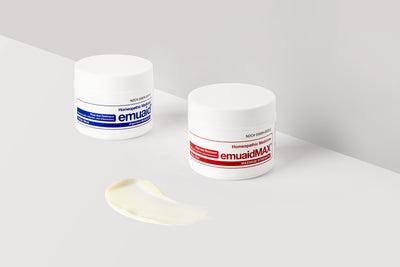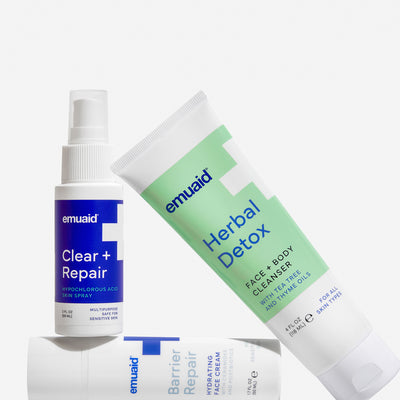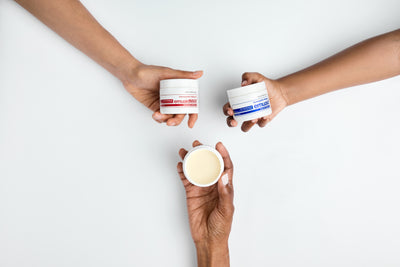How to Care for Shingles: A Comprehensive Guide
Shingles is a viral infection caused by the Varicella-Zoster Virus, the same agent responsible for chickenpox. If you've had chickenpox, you're at risk for developing shingles later in life. This condition manifests as a painful rash and can result in severe pain that lasts for weeks or even months. Although there's no definitive cure for shingles, antiviral drugs can manage symptoms and speed up recovery. Prevention is available in the form of a shingles vaccine, which is especially recommended for older adults. While shingles itself can't be contracted through direct contact, the Varicella-Zoster Virus can give chickenpox to those who haven't had it. For such individuals, the chickenpox vaccine offers some protection. Understanding shingles and its treatment options is crucial for effective management of this debilitating condition.
Shingles Facial: How to Care for It
Caring for shingles on the face requires a delicate approach, as the skin in this area is often more sensitive. To help alleviate the pain and discomfort caused by shingles, consider using natural remedies alongside medical treatments. Applying cool compresses to the affected area can help soothe the skin and reduce inflammation. It's important to keep the skin clean and dry, and avoid touching or scratching the rash to prevent infection.
For additional relief and faster healing, antiviral medications can be prescribed by your healthcare provider. These medications can reduce the rash's severity, shorten the duration, and lower the risk of developing postherpetic neuralgia, a persistent pain that can last even after the rash and blisters are gone.
Support your body's immune response and promote natural healing by getting plenty of rest, eating a well-balanced diet, and staying hydrated. Remember, it's crucial to seek medical advice from your healthcare professional before starting any treatment.
Shingles on the Face and Scalp
When shingles affects the face and scalp, it can be particularly challenging to manage due to the proximity to the eyes and other sensitive areas. Taking proper care of the lesions is essential to prevent complications. As with facial shingles, using cool compresses and keeping the area clean and dry can help provide relief.
Over-the-counter pain relievers can be taken to help reduce pain and discomfort. In some cases, your healthcare provider may prescribe topical treatments, anticonvulsants like gabapentin, or tricyclic antidepressants such as amitriptyline for further pain management.
To soothe itchy skin, consider an oatmeal bath or applying calamine lotion once the blisters have scabbed over. While dealing with shingles on the face and scalp, it's essential to monitor the eyes closely and seek immediate medical attention if any eye-related symptoms develop to prevent potential damage to your vision.
Overall, it's important to follow your healthcare provider's advice and maintain a healthy lifestyle to support the healing process. Natural remedies can provide supplementary relief, but it's essential to consult your doctor before incorporating them into your care plan. Remember to be patient, as the healing process for shingles may take several weeks.
What is the Most Common Treatment for Shingles
If you are suffering from shingles, there are various treatment options available, ranging from medications to over-the-counter remedies. Early treatment is vital to alleviate symptoms and reduce the risk of complications.
Over the Counter Remedies for Shingles
There are several over-the-counter remedies that can provide relief from the symptoms of shingles. These remedies include:
Pain relievers, such as ibuprofen or acetaminophen, which can help alleviate pain and reduce fever.
Calamine lotion, which soothes the skin and eases itching.
A cold compress, which can help ease pain and itching when applied to the affected area.
Topical Shingles Treatment
Some topical creams and topical medication can be applied to the shingles rash to help soothe and alleviate symptoms. These treatments include:
Capsaicin cream: A topical patch derived from chili peppers that can provide pain relief by blocking nerve signals.
Lidocaine: A numbing agent used in creams and gels to provide temporary relief for moderate pain to intense pain.
EMUAIDMAX® First Aid Ointment
When it comes to homeopathic skincare solutions, EMUAIDMAX® First Aid Ointment is at the forefront of innovation. This superior ointment is engineered with an advanced blend of natural and medical-grade ingredients, all carefully curated to ensure maximum effectiveness without requiring a prescription.
What sets EMUAIDMAX® First Aid Ointment apart is its ability to penetrate the skin's outermost layer to deliver targeted healing. It contains zero chemicals, artificial preservatives, lanolin, alcohol, parabens, petrochemicals, or fragrance, ensuring you're only applying what's best for your skin. Simply apply a generous amount to the affected area and let the high-quality ingredients go to work, providing relief and healing to your inflamed and irritated skin.
To use EMUAIDMAX® First Aid Ointment for shingles rash treatment, apply it to the affected area 3-4 times per day or as directed by a healthcare professional. If you experience any allergic reactions, seek immediate medical attention for prompt and appropriate treatment.
EMUAIDMAX® Concentrate First Aid Serum
For those who find themselves battling shingles in hard-to-reach or sensitive areas like the scalp, EMUAIDMAX® Concentrate First Aid Serum offers an exceptional alternative. This serum brings all the potent healing capabilities of the EMUAIDMAX® First Aid Ointment in a free-flowing, easy-to-apply formula.
Designed with a specialized applicator, the serum makes targeted treatment a breeze. The serum not only relieves symptoms but also reduces shingles pain, itch, infection, redness, and inflammation. Just like the ointment, the serum is free from harmful substances like chemicals, artificial ingredients, preservatives, and steroids, ensuring a safe and effective relief option for shingles and other skin conditions.
Alternative Remedies for Shingles
For those seeking alternative treatments for shingles, there are several natural remedies that may help provide relief for the painful skin rash. Although these methods may not completely cure the condition, they can help alleviate symptoms and discomfort associated with shingles.
Natural Ways to Treat Shingles
Cold compresses: Applying a cold compress to the affected area can provide temporary relief from itchiness and pain. Be sure to use a clean cloth or towel to avoid the risk of infection.
Cool baths: Taking a cool bath can help soothe skin affected by shingles. Adding 1 to 2 cups of colloidal oatmeal or baking soda to the bathwater may also help reduce itching and discomfort.
Essential oils: Some essential oils, such as tea tree oil, eucalyptus oil and lavender oil, may provide relief due to their natural antiviral and anti-inflammatory properties. Make sure to dilute essential oils with a carrier oil before applying them to the skin.
Dietary and herbal remedies: Consuming foods rich in antioxidants, such as berries, dark leafy greens, and nuts, may help support the immune system and provide natural relief for shingles. Additionally, certain herbs, such as licorice root, echinacea, and lemon balm, may have antiviral properties that could aid in managing shingles symptoms.
It is essential to remember that these alternative remedies should be used in conjunction with medical treatment. Please consult your health care provider before using any alternative treatment or natural remedy to ensure their safety and effectiveness for your specific condition.
Additional Considerations
Should You Exercise with Shingles?
When dealing with shingles, it's essential to consider your activity levels. Moderate exercise may be beneficial during recovery, as it can help boost the immune system and reduce stress. However, it's crucial to listen to your body and avoid overexertion. Refrain from high-impact workouts or activities that cause excessive sweating, which can further irritate the affected skin area. It's essential to consult with your healthcare provider before starting any exercise regimen while affected by shingles.
Treatment of Shingles in the Elderly
Elderly individuals are more susceptible to shingles due to their often weakened immune systems. Treatment for this age group should focus on quick initiation of antiviral medications, such as:
Acyclovir (ay-sah-EE-kluh-veer)
Valacyclovir (va-luh-sah-EE-kluh-veer)
In addition, managing pain using appropriate analgesics, and taking care of the skin with appropriate home care strategies may help the healing process. It is important for elderly individuals to follow their healthcare provider's guidance and monitor their symptoms closely.
How Long for Shingles to Heal: What to Expect
The healing time for shingles may vary, but typically, most people experience improvements within 7 to 10 days. The initial symptoms include itching or pain, followed by the appearance of the telltale rash and blisters. During this time, it's essential to keep the affected area clean and dry, avoid scratching, and keep clothing loose to avoid further irritation.
There are several stages of healing:
Prodromal stage: Pain or itching without visible rash
Active rash stage: Blistering rash appears
Crusting and healing stage: Blisters scab over and begin to heal
Throughout these stages, proper pain management and skin care can significantly influence the overall recovery duration. Maintaining a healthy immune system can also help prevent recurrent outbreaks of shingles.
In some cases, postherpetic neuralgia, a persistent burning pain, may continue after the rash and blisters have resolved. This pain typically decreases over time, but early intervention and appropriate treatment can help manage this lingering symptom.
While managing shingles, it's essential to follow your health care provider's recommendations and monitor any changes or worsening of symptoms.



